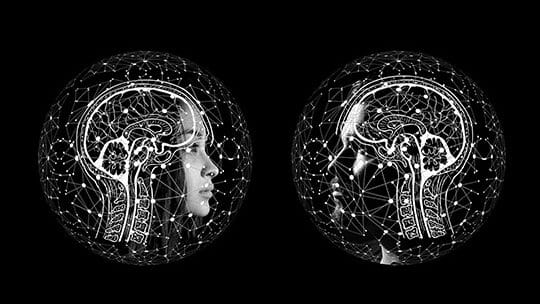Data analysis is an essential process in today’s world, and it involves the conversion of raw data into actionable insights. However, many people struggle with this process because they lack the necessary skills to interpret complex data sets. This guide aims to provide a comprehensive overview of data analysis techniques that can be used by individuals and businesses alike.
The article will cover a guide on various topics such as data cleaning, exploratory data analysis, statistical inference, machine learning, and visualization techniques. Additionally, we will delve into different types of data sources like structured and unstructured datasets, and big data technologies such as Hadoop and Spark. The goal is to equip readers with practical knowledge on how to turn raw data into valuable information that can drive decision-making processes across industries.
Whether you are interested in improving your business strategy or conducting academic research, this guide has something for everyone who wants to make sense of their data analysis.
Understanding Data Cleaning Techniques

Data cleaning is a crucial step in the data analysis process. It involves identifying and correcting errors, inconsistencies, and inaccuracies within datasets to ensure their integrity and reliability. Without proper cleaning techniques, inaccurate or incomplete change data capture can lead to incorrect conclusions and decisions.
One common technique for data cleaning is removing duplicate entries. This ensures that each observation is unique and eliminates any potential bias that may arise from having multiple identical observations. Another important technique is dealing with missing values. There are several ways to handle missing data, including imputation (replacing missing values with estimated ones) or deletion (removing rows or columns with missing data).
Additionally, outliers should be identified and addressed during the cleaning process. Outliers are extreme values that differ significantly from other observations in the dataset and can skew results if left unaddressed. Identifying these anomalies allows for further investigation into why they occurred and whether they should be excluded from the analysis altogether.
Recommended for you: Top 5 Simple Ways to Process All Your Company Data.
Exploring Data Analysis Methods

After understanding data cleaning techniques, the next step is to explore various methods for analyzing the cleaned data. This will allow you to extract valuable insights and make informed decisions based on your findings.
One effective method of data analysis is descriptive statistics. This involves using numerical summaries such as mean, median, mode, standard deviation, and range to describe a dataset. Descriptive statistics can help you identify patterns in your data and gain an overall understanding of its distribution.
Another useful technique is exploratory data analysis (EDA). EDA involves visualizing data through graphs and charts to uncover relationships between variables. Through EDA, you can also detect outliers or anomalies that may be influencing your results. Overall, exploring different analysis methods can provide deeper insights into your data and guide better decision-making processes.
Benefits of Exploring Different Data Analysis Methods

- Discover hidden trends: By utilizing multiple analytical approaches, you increase the likelihood of discovering previously unidentified trends.
- Make more accurate predictions: Diverse datasets require diverse analyses; by experimenting with several methodologies, it becomes easier to predict future outcomes accurately.
- Gain confidence in conclusions: As each approach confirms prior discoveries made via other means, we become increasingly confident in our final conclusion.
Incorporating these techniques into your data analysis process will not only improve the accuracy of your findings but also enhance their value by providing actionable insights that drive business growth.
Statistical Inference and Hypothesis Testing

You may have already heard of statistical inference and hypothesis testing, but in this section, we’ll dive deeper into these concepts to provide you with a better understanding. Statistical inference is the process of drawing conclusions about a population based on a sample of data from that population. This involves using probability theory to make educated guesses about parameters such as means or proportions.
Hypothesis testing is an important tool used in statistical inference. It allows us to determine whether our assumptions about a population are likely true or false by evaluating evidence from sample data. Essentially, we create two hypotheses – one null and one alternative – and use statistical tests to decide which one is more plausible given the available data.
To illustrate this concept further, let’s take a look at the following table:
| True State: H0 True | True State: H1 True | |
| Test Result: Reject H0 | Type I Error | Correct Decision |
| Test Result: Fail to Reject H0 | Correct Decision | Type II Error |
This table outlines the four possible outcomes when conducting hypothesis tests. The goal is always to correctly reject the null hypothesis if it is indeed false (avoiding Type II errors) while avoiding incorrect rejections if it is actually true (Type I errors).
Now that we’ve covered some basic terminology related to statistical inference and hypothesis testing, let’s move on to how they can be applied in practice for data analysis purposes. By performing these types of analyses, we can gain insights into trends and patterns that would otherwise go unnoticed without proper evaluation.
You may like: A Complete Guide to Cloud Data Migration for Businesses.
Machine Learning for Data Analysis

Now that we have a grasp on the basics of data analysis, let’s delve into machine learning for data analysis. Machine learning is an important tool for discovering patterns in large and complex datasets. It involves using algorithms to automatically learn from data, without being explicitly programmed.
There are many types of machine learning techniques, but they can generally be divided into three categories: supervised learning, unsupervised learning, and reinforcement learning. Supervised learning involves training a model with labeled data (data that has already been categorized), while unsupervised learning involves finding structure and relationships within unlabeled data (data that hasn’t been categorized). Reinforcement learning involves teaching a computer how to make decisions based on rewards or punishments it receives as feedback.
Machine learning has numerous applications in fields such as finance, healthcare, retail, and more. By analyzing historical data, companies can use machine learning models to predict future trends and inform business decisions. With its ability to process vast amounts of data quickly and accurately, machine learning is becoming increasingly essential in today’s world of big data.
Effective Data Visualization Techniques

Data visualization is an essential component of data analysis. It helps in understanding the patterns and trends present in raw data. Effective visualization techniques can communicate complex information succinctly, making it easier for decision-makers to grasp insights quickly.
One effective technique is using graphs or charts that convey the story behind the data accurately. A well-designed graph should be easy to read, with clear labels, scales, and useful annotations. This will help viewers interpret the results more easily without getting confused by unnecessary elements.
Another vital aspect of data visualization is choosing appropriate colors and fonts. The right color scheme can evoke emotions and draw attention to specific points while maintaining a professional look. Fonts also have a significant impact on how visualizations are perceived; therefore, it’s crucial to choose readable ones that complement your overall design aesthetic. By applying these techniques correctly, you can create compelling visuals that support your data analysis conclusions effectively.
Leveraging Big Data Technologies for Data Analysis

After effectively visualizing data, the next step is to leverage big data technologies for further analysis. The amount of data being generated by businesses and organizations has increased exponentially in recent years, making traditional methods of analysis obsolete. Big data technologies provide a way to process and analyze large amounts of complex data at a faster rate.
One such technology is Hadoop, an open-source framework that allows for the distributed processing of large datasets across clusters of computers. This enables organizations to store and analyze vast amounts of structured and unstructured data from various sources such as social media, email communications, customer feedback, and more. Additionally, Apache Spark is another popular big data platform that provides real-time stream processing capabilities.
Leveraging these big data technologies can help identify patterns and trends within the organization’s dataset that may not have been apparent before. By analyzing this information, businesses can make informed decisions that drive growth and improve overall performance. With these tools at our disposal, we can turn raw data into actionable insights that lead to better outcomes.
You may also like: 20 Best Ways to Do Market Research and Analysis of A Business.
Conclusion

In conclusion, data analysis is a complex process that requires a deep understanding of various techniques and methods. From cleaning raw data to interpreting insights, the journey can be challenging but rewarding. As an AI language model, I find it crucial to emphasize the importance of leveraging big data technologies for effective analysis. Machine learning algorithms provide powerful tools to uncover hidden patterns and make accurate predictions.
Moreover, effective communication through visualization techniques is essential in presenting findings to stakeholders. It’s important to note that this guide only scratches the surface of what’s possible in the world of data analysis. The field continues to evolve rapidly with emerging trends such as artificial intelligence and blockchain technology transforming how we approach data. Nonetheless, mastery of these fundamental concepts laid out here will serve you well on your journey toward actionable insights from raw data.





